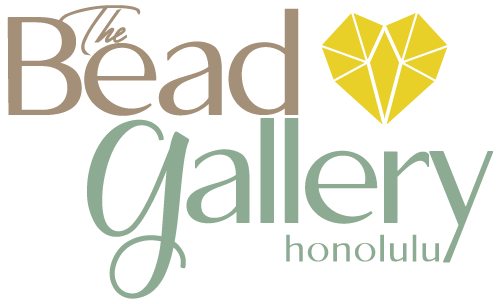Tips and Tricks - The short and sweet of the video!
• Design tip: when Michelle makes tapered clusters on a pendant or earring with briolettes or gems, she works from the bottom up, making the thinnest part at the bottom and working her way to the top where it’s the fullest. A “grapevine” cluster of approximately 1.5” in. length is good for earrings. Her favorite chain to do a cluster on is #126 Flat baby cable #126 - sterling silver - $4.75/ft.
• Cut a soldered chain on the seam and you can reuse it as another link, by looping it onto itself. OR better yet, choose unsoldered chain when possible, and don’t lose the links you would usually cut!
• Don’t wire wrap your loops shut, until you like your layout! This saves you from cutting off any wire wraps that don’t !
• When making stretchy cord bracelets, hide your knot in the largest bead hole.. This means that you can either START or END with this bead.
• When cutting your stretchy cord, use VERY sharp scissor or cutters to cut your thread. This will prevent fraying of the cord, and then it will not unravel or weaken as you use it. We like the Tim Holtz scissors!!
• If your bead hole is NOT big enough to hide your stretchy cord knot in, use a motorized bead reamer to make the hole larger.. this will take a minute or two. PICK the softest bead to drill, for example, eliminate the metals, and Herkimer quartzes, the corundums… and go for the pearls, turquoise, and softer stones. If you are unfamiliar with the “hardness” of the stone, look it up online for MOHS scale of hardness..
Mohs' scale of mineral hardness is named after Friedrich Mohs, a mineralogist. Mohs scale is ordered by hardness, determined by which minerals can scratch other minerals.[1]
Rocks are made up of one or more minerals. According to the scale, Talc is the softest: it can be scratched by all other materials. Gypsum is harder: it can scratch talc but not calcite, which is even harder. The hardness of a mineral is mainly controlled by the strength of the bonding between the atoms and partly by the size of the atoms. It is a measure of the resistance of the mineral to scratching, the Mohs scale is for natural minerals. For manufactured products other measures of hardness are better.[2]
Diamond is always at the top of the scale, being the hardest mineral. There are ten minerals in Mohs scale, talc, gypsum, calcite, fluorite, apatite, feldspar, quartz, topaz, corundum, and for last and hardest, diamond. Because the Mohs scale was made long ago, it is not exactly correct - for example, several minerals are now known to be harder than the diamond. The Mohs scale may not be perfect, but field geologists still find it very useful.
Video Link Here:
https://www.facebook.com/thebeadgallery.honolulu/videos/2533655813630424

